Home > Help Desk > Our Company > Newsletter Archives > May 2013 - National Historic Preservation Month
< Previous PageMay 2013 - National Historic Preservation Month

Historic Mathews-Powell House (photo by Neil Abeles)
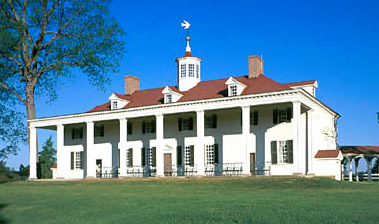 To prevent the loss of this historic site, Ann Pamela Cunningham created the Mount Vernon Ladies’ Association to protect this house. This first established group for preservation raised the money to purchase the property and protect it from ruin. As a result, not only does this house still exist to represent the nation and the birth of independence, but the Mount Vernon Ladies' Association is also said to have “served as a blueprint for later organizations.” To prevent the loss of this historic site, Ann Pamela Cunningham created the Mount Vernon Ladies’ Association to protect this house. This first established group for preservation raised the money to purchase the property and protect it from ruin. As a result, not only does this house still exist to represent the nation and the birth of independence, but the Mount Vernon Ladies' Association is also said to have “served as a blueprint for later organizations.”
Several pieces of legislation were passed from 1906 through 1935 to begin to protect the nation’s history and land, create the National Park Service, and write policy for preservation.
Then, on October 26, 1949, President Truman signed the National Trust for Historic Preservation Act “to facilitate public participation in the preservation of sites, buildings, and objects of national significance or international interest.”
In 1965, a report coordinated by Lady Bird Johnson (First Lady at the time), With Heritage So Rich, triggered public awareness and proposed the National Historic Preservation Act that was signed into law by President Lyndon B. Johnson on October 15, 1966.
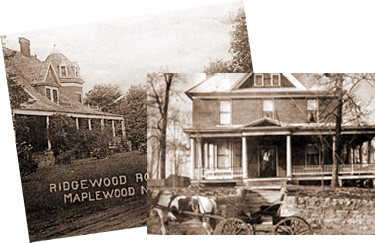 We have helped hundreds of thousands of folks preserve and restore their houses -- both those on historical registries dating back hundreds of years and those that were modernized in the past few decades. Our customers that own the two houses above were fortunate enough to have photos from 1909 (left) and 1907 of what the structures looked like soon after they were built.
We have helped hundreds of thousands of folks preserve and restore their houses -- both those on historical registries dating back hundreds of years and those that were modernized in the past few decades. Our customers that own the two houses above were fortunate enough to have photos from 1909 (left) and 1907 of what the structures looked like soon after they were built.
|
|
Quotable...
“There is a need in every generation to study the past, to absorb its spirit, to preserve its messages...it’s a collaboration of ourselves and our ancestors, the result is a deeper understanding for individuals and in consequence, a broader culture for the nation."
- Christopher Tunnard
"It's not good because it's old, it's old because it's good." - Anonymous
"We will probably be judged not by the monuments we build but by those we have destroyed."
- New York Times Editorial on the destruction of Penn Station
"When we build, let us think that we build forever. Let it not be for present delight nor for our use alone. Let it be such work as our descendants will look upon with praise and thanksgiving in their hearts."
- John Ruskin

Creative Customers...
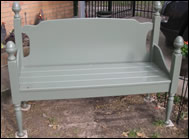
A customer created this custom bench from our 3" Balusters and French Acorn Finials!
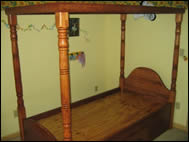

This customer created a charming bed for his daughter using our Turned Porch Posts.

We love sharing in your success, so please send us your photos!
|
We are thrilled to have been a part of the Powell's 18-month restoration on the Mathews-Powell House in Queen City, Texas. As the article says in their local paper, this historic "home regains former beauty." It was built in 1878 by William Franklin Mathews, and as mentioned above, is on both state and national historic registers.
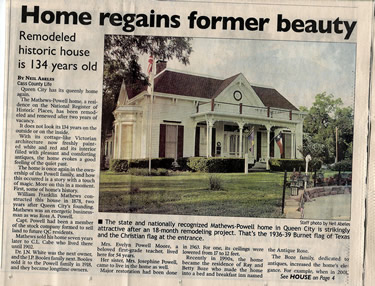
We applaud those who undertake restoration projects in celebration of the past! We also tip our hats to everyone who appreciates the traditional aspects of architecture and design because even a newly built home can embody and preserve the past through its traditional style and architectural details.
(sources)
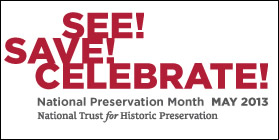
"It has been said that, at its best, preservation engages the past in a conversation with the present over a mutual concern for the future."
- William J. Murtagh
|
|
|
 "Like" us on Facebook! After you do, please send us a Facebook message, and we'll reply with a Coupon Code for $10 off your next order.
You can browse previous newsletter editions and read other readers' feedback at our website.
If we can be of further assistance, please let us know. We'd love to help with your projects in any way we can. "Like" us on Facebook! After you do, please send us a Facebook message, and we'll reply with a Coupon Code for $10 off your next order.
You can browse previous newsletter editions and read other readers' feedback at our website.
If we can be of further assistance, please let us know. We'd love to help with your projects in any way we can.
The Folks at Vintage Woodworks
|
|
Sources:
Christopher J. Duerken et all., A Handbook on Historic Preservation Law, edited by Christopher J. Duerken (Washington D.C.: Conservation Foundation: National Center for Preservation Law, 1983), 1.
Christopher Tunnard, ''Landmarks of Beauty,'' With Heritage So Rich, chaired by Albert Rains, directed by Laurence G. Henderson (New York: Random House, 1966), 30.
Mitchell Schwarzer, ''Myths of Permanence and Transience in the Discourse on Historic Preservation in the United States,'' Journal of Architectural Education 48, no. 1 (September 1994): 3-4.
Walter Muri Whitehall, ''The Right of Cities to be Beautiful,'' With Heritage So Rich, chaired by Albert Rains, directed by Laurence G. Henderson (New York: Random House, 1966), 49.
Adina W. Kanefield, Federal Historic Preservation Case Law, 1966-1996, rev. ed.
|






 To prevent the loss of this historic site, Ann Pamela Cunningham created the Mount Vernon Ladies’ Association to protect this house. This first established group for preservation raised the money to purchase the property and protect it from ruin. As a result, not only does this house still exist to represent the nation and the birth of independence, but the Mount Vernon Ladies' Association is also said to have “served as a blueprint for later organizations.”
To prevent the loss of this historic site, Ann Pamela Cunningham created the Mount Vernon Ladies’ Association to protect this house. This first established group for preservation raised the money to purchase the property and protect it from ruin. As a result, not only does this house still exist to represent the nation and the birth of independence, but the Mount Vernon Ladies' Association is also said to have “served as a blueprint for later organizations.”







